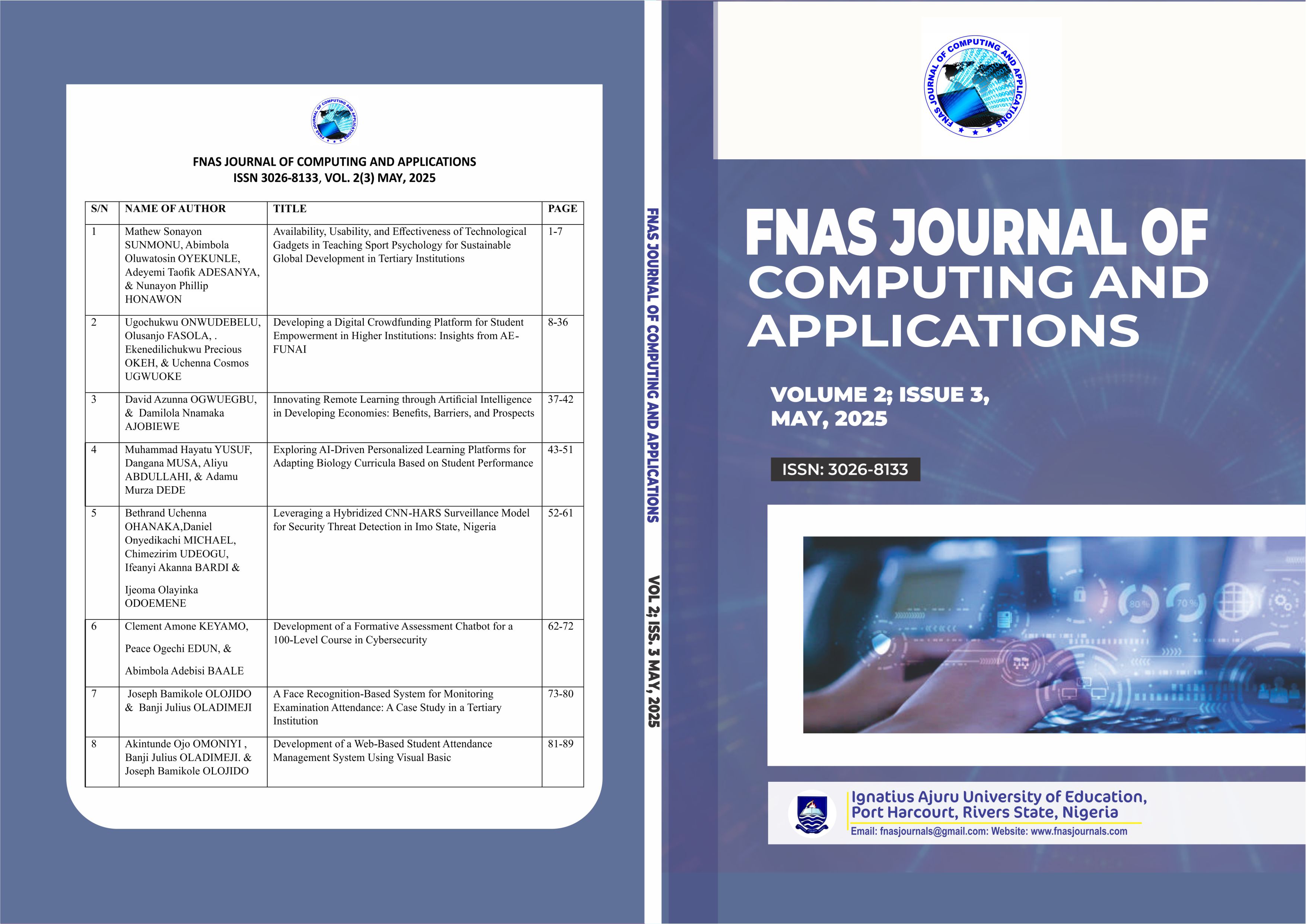A Face Recognition-Based System for Monitoring Examination Attendance: A Case Study in a Tertiary Institution
DOI:
https://doi.org/10.63561/jca.v2i3.838Keywords:
Face Recognition, Examination Attendance, Biometric Authentication, Tertiary Institution, Machine learning modelsAbstract
The increasing demand for reliable and efficient attendance tracking during examinations in tertiary institutions has highlighted the limitations of traditional manual systems. These systems are often prone to inaccuracies, time consumption, and security breaches such as impersonation. This study presents the design and implementation of a Face Recognition System for Examination Attendance (FRSEA), developed to automate and enhance the accuracy of student verification during exam sessions using advanced deep learning models, such as Convolutional Neural Networks (CNNs) the system captures and analyzes facial features in real-time to identify students against a pre-registered database. The architecture comprises three layers—presentation, application, and database—and integrates hardware components like high-resolution cameras with intelligent software algorithms to ensure high recognition accuracy, even in challenging conditions. The system’s features include real-time face detection, scalable database management, and strict security protocols to safeguard biometric data. Through rigorous unit, system, and user testing, the FRSEA demonstrated significant improvements in speed, reliability, and fraud prevention compared to conventional methods. This paper concludes that face recognition technology provides a practical and scalable solution for enhancing examination attendance systems in higher education, while also emphasizing the importance of privacy, usability, and continuous optimization.
References
Ghosh, A., & Roy, S. (2021). Implementation of a face recognition system for attendance monitoring in educational institutes. Journal of Visual Communication and Image Representation, 39(1), 204–213.
Khan, A., & Khan, M. (2017). Face recognition for classroom attendance using hybrid algorithm. Journal of Machine Learning Research, 32(1), 19–27.
Kisku, D. R. (2014). Facial recognition for automated attendance in classrooms: A survey. Journal of Intelligent Systems, 19(3), 315–324.
Lee, C., & Kim, J. (2019). Face recognition using deep learning techniques for automated attendance tracking. Journal of Pattern Recognition, 41(2), 303–315.
Patel, S., & Thaker, R. (2020). A deep learning approach to face recognition in educational systems. Journal of Artificial Intelligence, 18(2), 156–163.
Ravichandran, V., & Kumar, P. (2016). Face recognition system for educational applications using support vector machines. Journal of Pattern Recognition and Applications, 22(3), 225–236.
Smith, A., & Johnson, B. (2018). A novel approach to real-time face recognition for attendance systems. Journal of Computer Vision and Applications, 32(4), 421–430.
Woody Bledsoe, H., Wolf, H. C., & Bisson, C. (1966). Man-computer recognition of faces. Journal of the Society for Information Display, 3(2), 49–51.
Yu-Xin, D. (2018). Implementation of face recognition in classroom attendance using CNN. Journal of Image Processing and Machine Learning, 27(1), 91–100.
Zhang, Z., & Zhao, W. (2015). Real-time face recognition for attendance management systems. International Journal of Computer Vision, 58(4), 402–409.








